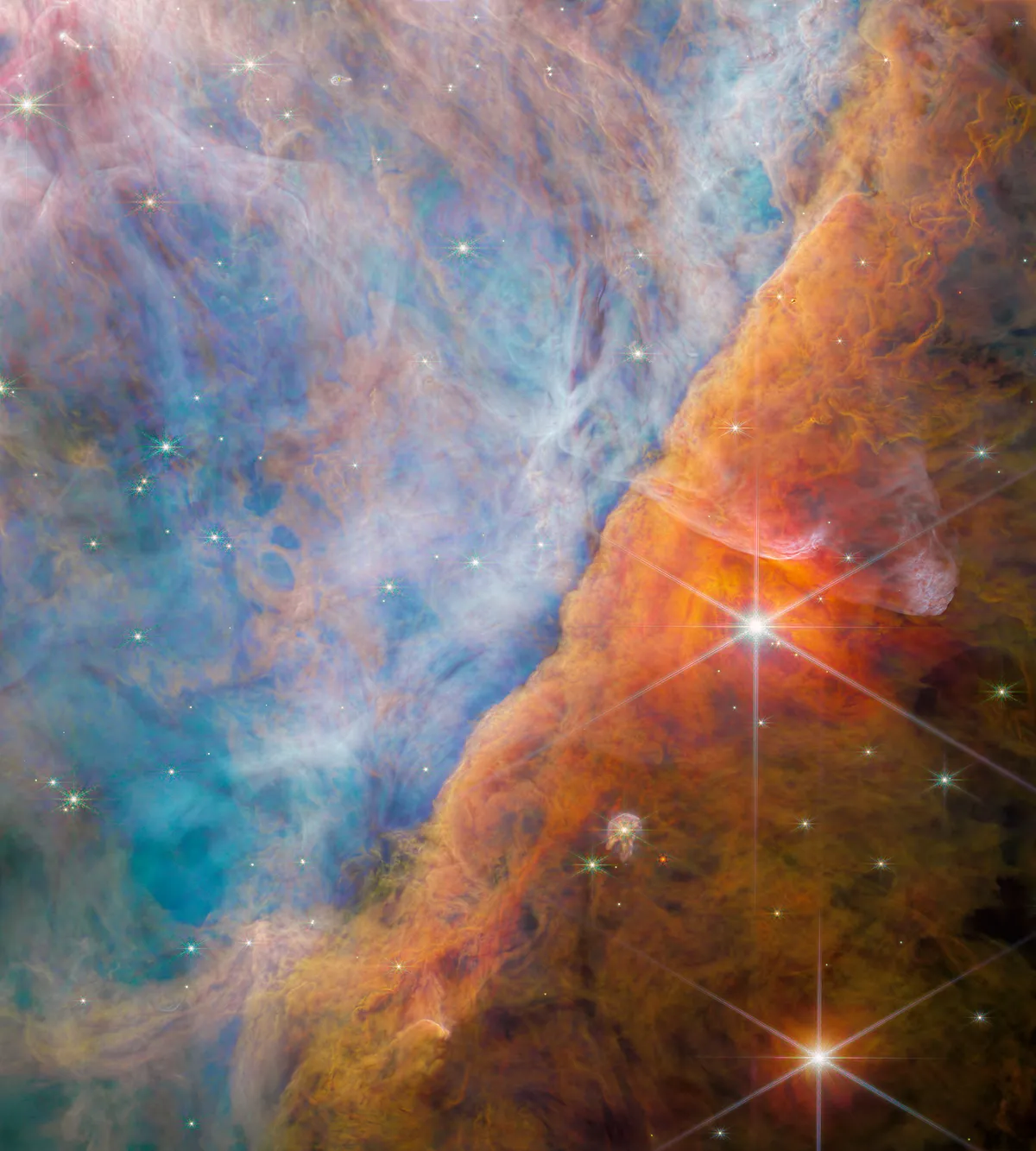A huge jet of gas stretching 8 lightyears long is erupting from an enormous star in the outer reaches of our Galaxy, and the James Webb Space Telescope has captured it in action.
The jet is about twice the length of the distance between the Sun and our nearest stellar system, Alpha Centauri.
Astronomers say the jet is something of a rarity because of how enormous and how powerful it is.
More Webb discoveries

Discovering the enormous jet
This stellar jet is erupting from a star that's about 10 times the mass of our Sun, in a cosmic cloud known as Sharpless2-284.
The jet is shooting across space at hundreds of thousands of miles per hour, and is a double-lobed outflow that can be seen shooting in opposite directions in the James Webb Space Telescope image.
"We didn’t really know there was a massive star with this kind of super-jet out there before the observation," says Yu Cheng of the National Astronomical Observatory of Japan, lead author of the study.
"Such a spectacular outflow of molecular hydrogen from a massive star is rare in other regions of our galaxy."

The science behind the jets
Astronomers describe jets like this as a star's 'birth announcement' to the Universe, because they shoot out from newly-forming stars.
They occur when gas falling inwards builds up around the star, then is blasted along the star’s spin axis, likely caused by magnetic fields.
Hundreds of protostellar jets have been observed by astronomers, but these are mostly from low-mass stars.
They offer astronomers a valuable insight into what's going on at a key stage in stellar birth.
"I was really surprised at the order, symmetry, and size of the jet when we first looked at it," says study co-author Jonathan Tan of the University of Virginia in Charlottesville and Chalmers University of Technology in Gothenburg, Sweden.
The detection is evidence that protostellar jets scale up with the mass of the star powering them.
In other words, the more massive the star, the larger the jet's size.
This jet’s filamentary structure is captured by the Webb Telescope in infrared, showing the jet smashing into interstellar dust and gas.
The chaotic process creates knots, bow shocks and linear chains.
Tell-tale tips
The tips of the jet tell the story of the star's formation.
"Originally the material was close into the star, but over 100,000 years the tips were propagating out, and then the stuff behind is a younger outflow," says Tan.
The star is part of a proto star cluster on the edge of the Milky Way. Within the cluster, a few hundred stars are still forming.
However, because they're on the outskirts of our Galaxy, astronomers say, the stars are deficient in heavier elements beyond hydrogen and helium.
That low metallicity of Sh2-284 makes it a pristine target, offering insight into what star formation might have been like in the early Universe, in environments that were also deficient in heavier elements.
"Massive stars, like the one found inside this cluster, have very important influences on the evolution of galaxies," says Cheng.
"Our discovery is shedding light on the formation mechanism of massive stars in low metallicity environments, so we can use this massive star as a laboratory to study what was going on in earlier cosmic history."
How Webb's view can help
"Webb’s new images are telling us that the formation of massive stars in such environments could proceed via a relatively stable disk around the star that is expected in theoretical models of star formation known as core accretion," says Tan.
"Once we found a massive star launching these jets, we realised we could use the Webb observations to test theories of massive star formation.
"We developed new theoretical core accretion models that were fit to the data, to basically tell us what kind of star is in the centre.
"These models imply that the star is about 10 times the mass of the Sun and is still growing and has been powering this outflow."
Webb could also help astronomers settle an enduring cosmic debate around star formation.
One theory suggests star formation must be a chaotic process, known as 'competitive accretion'.
In this model, material falls into stars from different directions, so the orientation of the star's disk changes over time.
The outflow is launched perpendicular, above and below the disk, so would also twist and turn in different directions.
"What we’ve seen here, because we’ve got the whole history – a tapestry of the story – is that the opposite sides of the jets are nearly 180 degrees apart from each other," says Tan.
"That tells us that this central disk is held steady and validates a prediction of the core accretion theory."
Read the full paper at iopscience.iop.org/article/10.3847/1538-4357/addf4b

